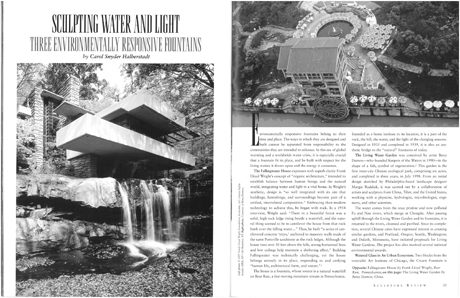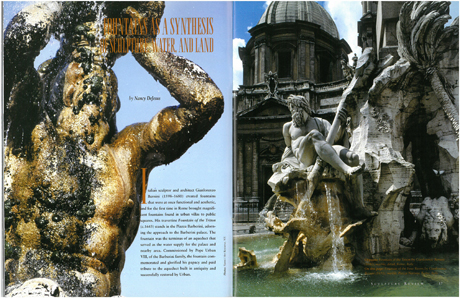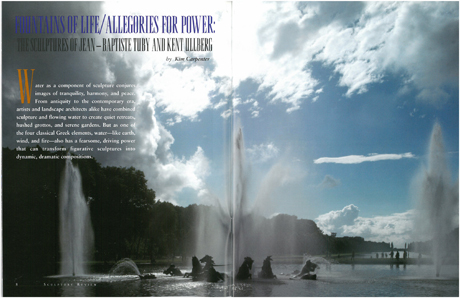
Sculpture Fountains
Features

Environmentally responsive fountains belong to their time and place. The ways in which they are designed and built cannot be separated from responsibility to the communities they are intended to enhance. In this era of global warming and a worldwide water crisis, it is especially crucial that a fountain fit its place, and be built with respect for the living waters it draws upon and the energy it consumes.

Public monuments have always depended on the cooperation of diverse groups and individuals, but the most successful incorporate what are considered to be the highest forms of architecture and art in their era.

Italian sculptor and architect Gianlorenzo Bernini (1598-1680) created fountains that were at once functional and aesthetic, and for the first time in Rome brought magnificent fountains found in urban villas to public squares.

Water as a component of sculpture conjures images of tranquility, harmony, and peace.
